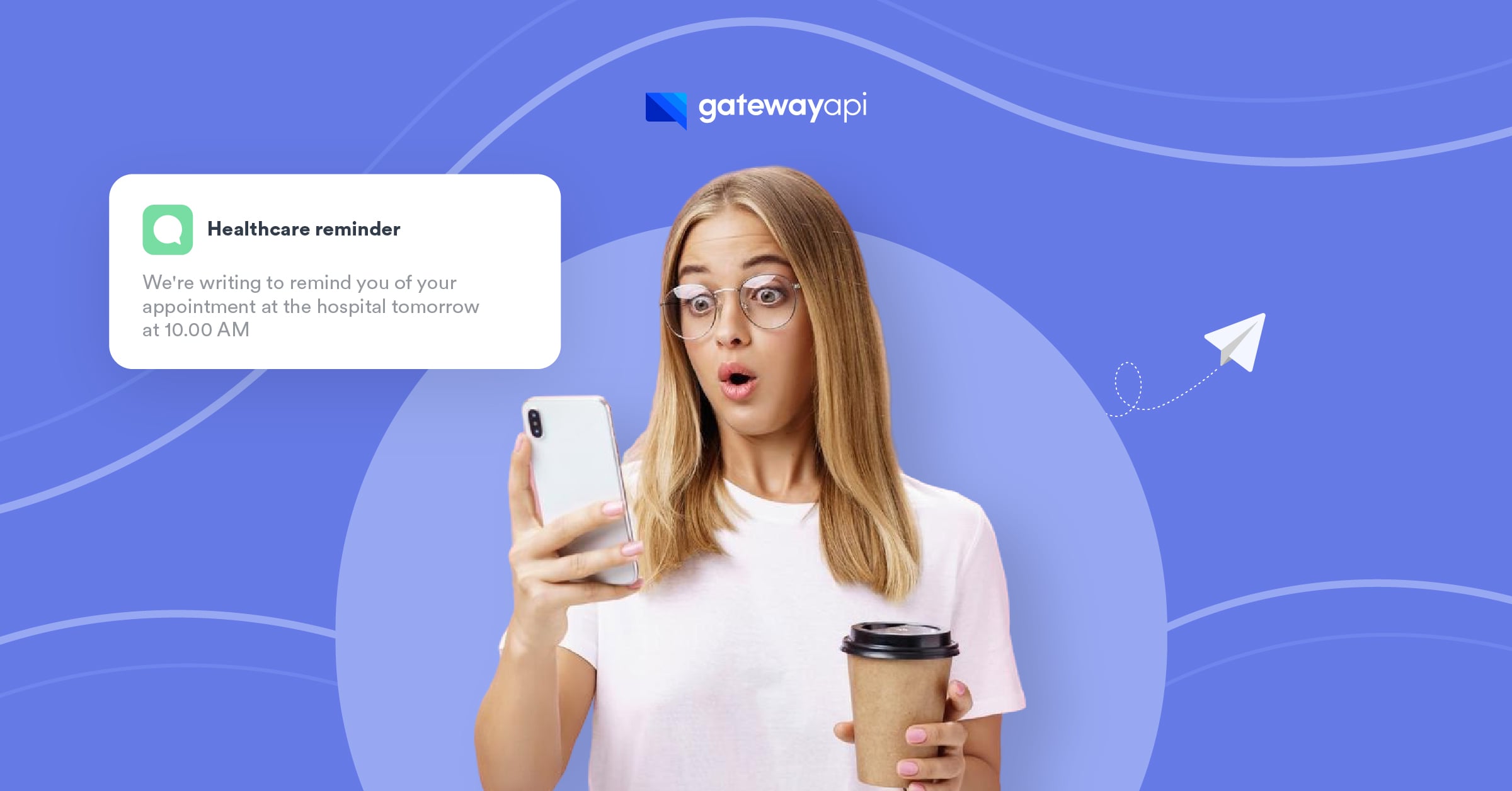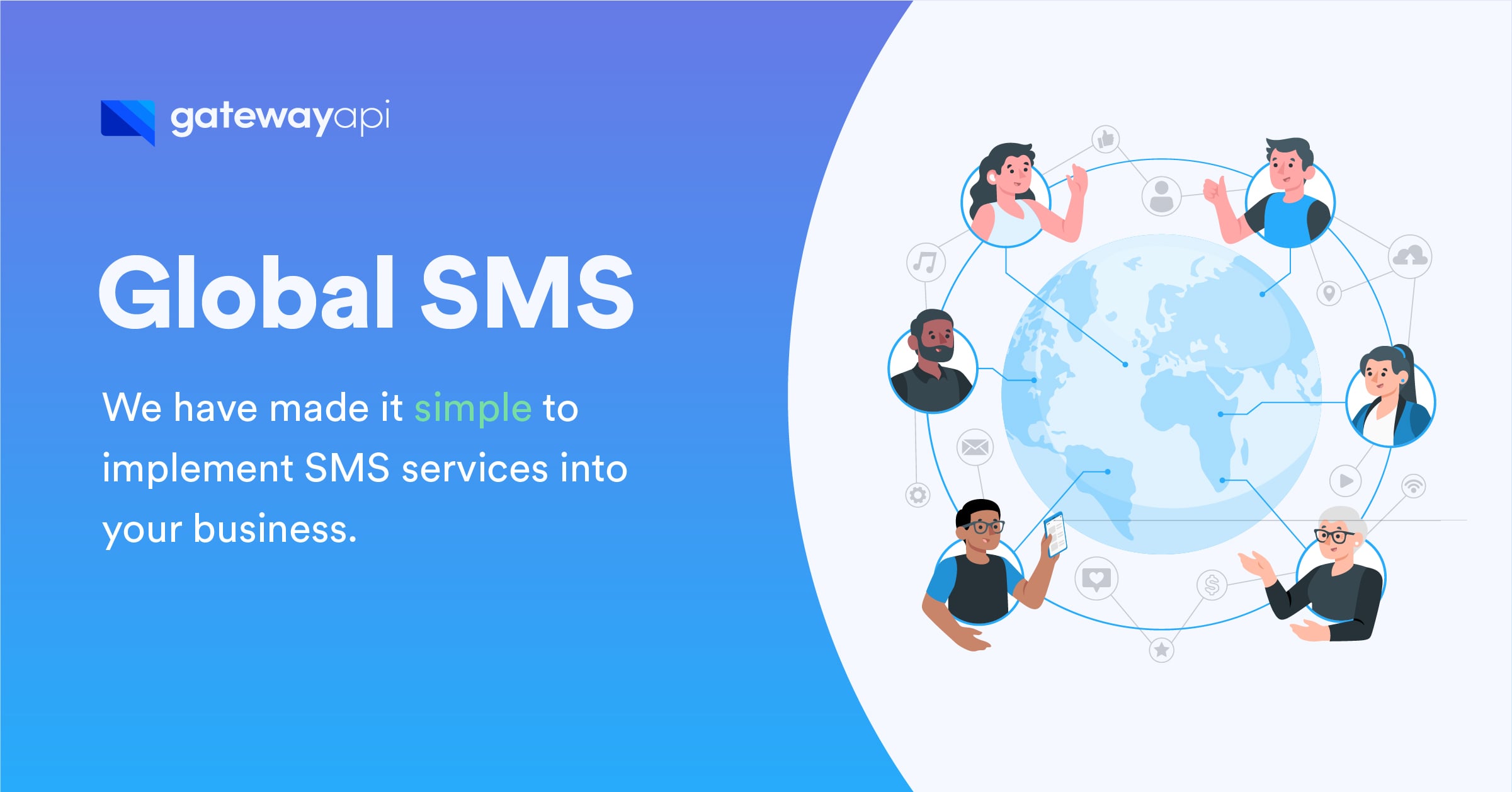Reduce No-Shows in the Healthcare Industry with SMS and Behavioral Principles

No-shows are a major problem in the healthcare industry, with consequences for both patients and healthcare providers. For patients, a missed appointment can mean delayed treatment and potentially worsen their health. At the same time, doctors and nurses are standing by without being able to treat anyone, which is a poor use of healthcare resources.
No-shows aren’t just a nuisance – they’re also expensive. Over the years, various measures have been implemented with mixed success to reduce no-shows, from reminders to fees. One of the most effective methods today has proven to be SMS reminders to patients. Managed well, these messages combined with behavioural design principles can significantly reduce no-shows as we’ll explore below.
The cost of patient no-shows
Every no-show means wasted resources, which also delays treatments, disrupts patient continuity, reduces efficiency and frustrates healthcare professionals.
Studies estimate that on average, a single no-show costs the healthcare system around €200 in lost resources. When you multiply that by the number of no-shows, it adds up to significant sums. One medium-sized Danish hospital estimates that no-shows cost them over 5 million euros per year. At the same time, extra resources are needed to manage new appointments and make the best possible use of capacity.
SMS reminders as an effective channel
One of the most effective ways to reduce no-shows is to send patients an SMS reminder prior to their appointment. SMS is a particularly powerful channel for several reasons: First, almost all patients have a cell phone and experience shows that 9 out of 10 SMS messages are read shortly after receipt. Secondly, SMS messages are short, direct and independent of smartphones or the internet – they reach the recipient instantly and require minimal effort to read.
Above all, the impact of SMS reminders is well documented. Today, it has become standard practice in many hospitals and clinics to send a text message prior to an appointment to remind patients to show up or cancel. Both international research and local experience point to a significant reduction in no-shows thanks to SMS. A UK study found that the no-show rate was 38% lower among patients who received an SMS reminder compared to a control group with no reminders.
When to send SMS reminders for maximum impact
Timing is crucial to the effectiveness of a reminder. A rule of thumb is that the reminder should be sent close to the time of the required action in order to have the greatest impact – but not so late that the patient or health system can’t respond. For healthcare appointments, this means that SMS reminders should be sent 24-48 hours before an appointment. If the message is sent too early, for example several weeks before, the patient risks forgetting it again. Conversely, if the message arrives too late, the patient may struggle to reschedule or cancel, and the hospital may not be able to give the time to another patient.
Many hospitals and clinics have found a good balance by sending multiple reminders, e.g. an SMS a week before to remind patients of the appointment ahead of time and another SMS 24-48 hours before the appointment as a final reminder to keep it top-of-mind.
Behavioral design principles for more effective SMS reminders
Just small adjustments to the wording of an SMS can lead to significant changes in patient behavior. In an experiment at a Danish hospital, they tried adding different sentences to the end of the message to see how big a difference it made.
One was a social norm message: “More than 9 out of 10 patients show up for their appointment or cancel on time – please do the same”. This addition resulted in an increase of about 10% more on-time cancellations compared to the control group.
The second addition was about the financial consequences: “On average, it costs the hospital DKK 1,500 every time a patient misses an appointment. Remember to show up for your appointment or cancel well in advance”. This addition resulted in an increase of about 40% more on-time cancellations compared to the control group.
It is worth noting that such nudging measures seem to work far better than sanctions. One experiment showed no measurable effect of a fee of €35 for no-shows.
Instead of punishing patients for forgetting their appointment, a simple and positively worded SMS can both remind them of the appointment and appeal to their sense of responsibility. This approach creates better results and maintains a good relationship.
How the public sector can implement SMS solutions
Public healthcare organizations have the opportunity to integrate SMS reminders into their systems relatively easily and efficiently. Here we look at how it can be done:
Public hospitals and clinics can integrate SMS reminders directly into their electronic booking systems or patient record systems. Implementation can be done by using an SMS API such as the one offered by GatewayAPI, which enables existing IT systems to send SMS messages automatically when certain events occur, such as when an appointment is booked or approaching.
The advantage of an automated SMS solution is that it can run in the background without burdening staff. Patients automatically receive their reminders and some systems even allow the patient to confirm or cancel the appointment via SMS.
Data security and patient confidentiality are paramount when choosing an SMS solution, but there are providers on the market that specialize in secure SMS solutions, including GatewayAPI, where we also offer a unique EU setup.
How SaaS companies in the healthcare industry can implement SMS solutions
SaaS companies that provide systems for the healthcare sector, such as online booking systems, medical record systems or clinic management systems, can benefit from making SMS reminders an integral part of their product. By building SMS functionality into their solution, they can offer their customers, such as medical centers and clinics, added value.
Implementation can be done by integrating with an SMS API that handles the actual sending of the messages. It typically requires only a few lines of code to connect such an API, after which the rest can run automatically.
For SaaS companies, this also opens up an additional revenue stream. They can either include a certain number of SMS messages in their subscription solutions or charge extra for SMS usage. Many choose to offer their customers an add-on package where the clinic pays a small price per SMS reminder sent, or have flexible pricing models that adapt to usage. In this way, a SaaS company can generate revenue through the SMS service while saving customers money by reducing no-shows.
SMS vs. other methods
Healthcare has traditionally used a variety of methods to reduce no-shows – including phone calls, letters and fees – but how does SMS compare to these? Below we compare the different channels and approaches:
- Phone calls: Calling patients in person before their appointment can be effective in reminding them of the time and providing an opportunity for dialogue. Studies indicate that phone reminders can actually reduce no-shows about as well as SMS and letters can. The downside is that it is very resource-intensive. It requires staff to call out and often require repeated attempts if the patient doesn’t answer.
- Letters: Before digital communication became widespread, physical letter invitations and reminders were standard. Letters can contain detailed information about the appointment, but they have several disadvantages. Firstly, they need to be sent well in advance and the patient may forget about the appointment in the meantime. Secondly, there is an economic and environmental cost to printing and sending letters. Today, letters are primarily used for first-time reminders or as a supplement, but as an actual reminder method it is neither very practical nor cost-effective compared to digital options.
- No-show fees: As mentioned, studies have not shown any significant effect of fees. The idea behind fees is that the threat of a financial consequence will motivate patients to show up or at least cancel. However, this practice is controversial and far from always effective. You often end up introducing a potentially cumbersome administrative system of charges without necessarily reaping the benefits in terms of improved attendance. In addition, fees raise questions of fairness: They can hit socially disadvantaged patients harder and risk creating bad feelings or mistrust between patient and system.

Get started with GatewayAPI
For organizations looking to reap the benefits of SMS reminders, choosing a reliable, scalable and secure SMS platform is essential.
GatewayAPI makes it easy to integrate SMS into existing systems. In addition, GatewayAPI offers a special EU setup with data storage and ownership within the EU and GDPR compliance with an annual independent audit.
This means you can trust us with sensitive information such as patient mobile numbers and message content – data is handled confidentially and securely in our system. For a more in-depth look at how we protect data, read our blog post on GDPR compliance and our annual ISAE 3000 audit.
Create a free account here to get started with GatewayAPI today.
